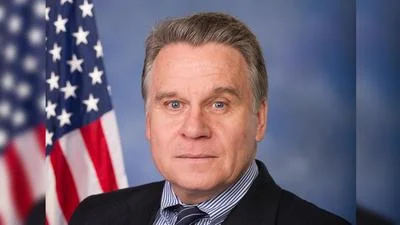The Congressional Record is a unique source of public documentation. It started in 1873, documenting nearly all the major and minor policies being discussed and debated.
“150TH ANNIVERSARY OF THE GOVERNMENT PRINTING OFFICE” mentioning the U.S. Dept of State was published in the Senate section on pages S1261-S1262 on March 4, 2011.
The publication is reproduced in full below:
150TH ANNIVERSARY OF THE GOVERNMENT PRINTING OFFICE
Mr. SCHUMER. Mr. President, I rise today as the chairman of the Joint Committee on Printing to recognize the Government Printing Office, GPO, on the occasion of its 150th anniversary. GPO opened its doors on March 4, 1861, the same day that President Abraham Lincoln took the oath of office for his first term. Since that time, the agency has used constantly changing technologies to meet the needs of the Congress, Federal agencies, and the public. During GPO's early days, employees relied on ink and paper to publish the text of President Lincoln's Emancipation Proclamation. Today, as another President from Illinois leads the Nation, GPO employees are using the latest digital technology to document the activities and decisions of our Government and to fulfill GPO's founding mission, which is ``Keeping America Informed.''
While GPO's past has been about printing, its present and future are being defined by electronic publishing. GPO has been investing for more than a generation in digital production and dissemination technology, an investment that has yielded significant improvements in productivity, capability, and savings for the taxpayers. The GPO estimates that converting to electronic, digital technology has resulted in a savings of 66 percent on the cost of congressional printing alone. Deploying such technology has also reduced the number of employees to fewer than at any time in the past century. And it has reduced dramatically the number of copies of official documents that are printed.
GPO's partnership with the printing industry supports tens of thousands of jobs. At the same time, by using GPO as a central procurement agency, the Federal Government reduces substantially the cost of these contracts to the taxpayers.
GPO now has a range of products and services that could only have been dreamed of 30 years ago: Online databases of Federal documents with state-of-the-art search and retrieval capabilities available to the public without charge, Government publications available as e-
Books, and a public presence not only on the Web but also on Twitter, Facebook, and You Tube. No longer is GPO primarily a publisher of printed government documents, but a fully integrated electronic publisher and clearinghouse whose products are available in many Internet-based locations. In addition, the State Department relies on GPO to provide highly secure U.S. passports containing sophisticated smart chips. GPO does this in conjunction with the private sector, which supplies certain critical components.
Another key function of GPO is its partnership with more than 1,200 Federal depository libraries across the country. These libraries, established by statute in all 50 States, make Federal documents available to millions of students, researchers, businesses, and others every year in both digital and print formats.
In short, GPO is responsible for the production and distribution of information products and services for all three branches of the Federal Government, including U.S. passports for the Department of State as well as the official publications of Congress, the White House, and other Federal agencies. In addition to publication sales, GPO offers permanent public access to Federal Government information at no charge through GPO's Federal Digital System--www.fdsys.gov--and through partnerships with approximately 1,200 libraries nationwide that are part of the Federal Depository Library Program.
I ask my colleagues to join me in congratulating the GPO on its 150th anniversary and on its contributions to keeping the public informed.
____________________








